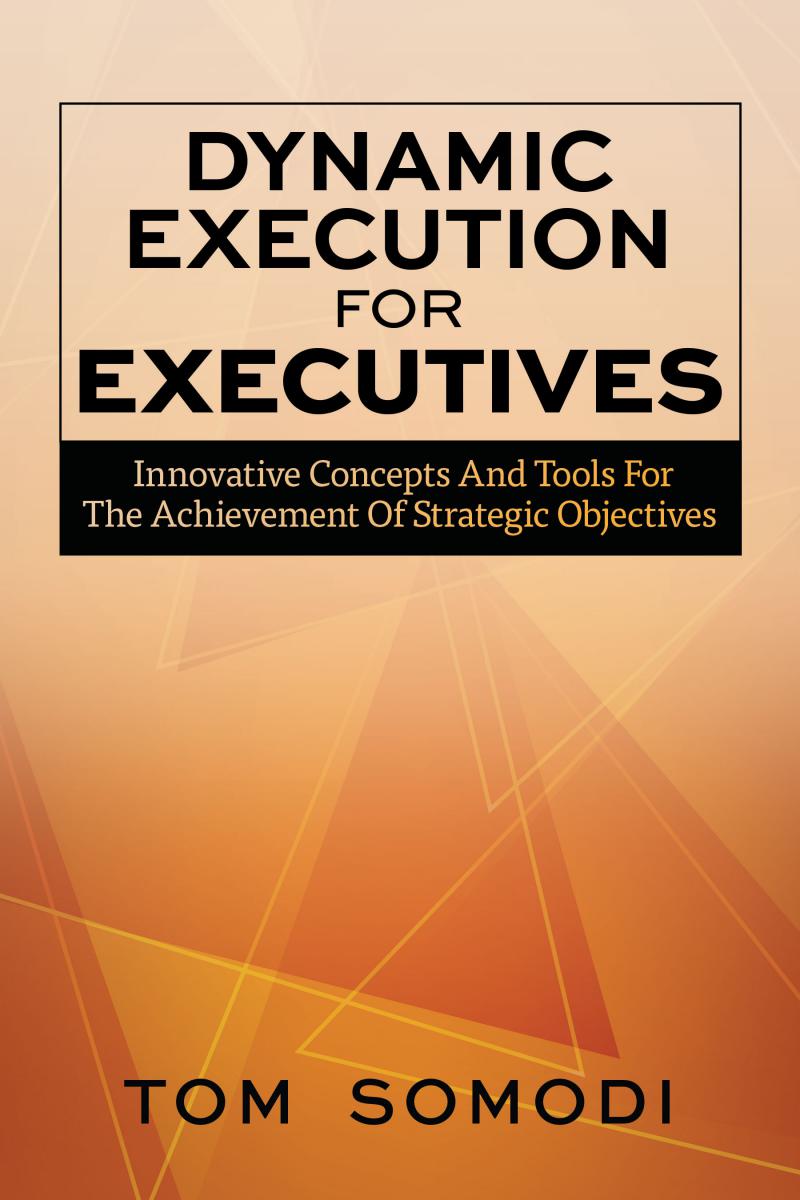
Business Execution Expert Tom Somodi: Four Best Practices To Improve Execution Of Strategic Initiatives
POMPANO BEACH, FL, UNITED STATES, April 8, 2025 /EINPresswire.com/ -- Would it surprise you that by following a specific set of guidelines, a company can easily reduce a strategic initiative timeline from 12 to 24 months to just four months?
“Uncontrolled timelines can be a major enemy of executives' objectives if not managed efficiently; therefore, the timeline controls the success or failure of any initiative,” says business execution expert Tom Somodi.
After spending more than 30 years in the corporate world, Somodi knows it is possible to significantly reduce timelines leading to successful achievement of objectives. His second book, Dynamic Execution for Executives, Innovative Concepts And Tools For The Achievement of Strategic Objectives, (2025, Indie Books International) presents new innovative concepts, tools, and methodologies to significantly improve a company’s ability to obtain successful initiatives resulting in desired objectives.
“Over the years, I was bombarded by ridiculously long strategic initiative execution timelines,” says Somodi, a business executive and entrepreneur. “From small- to large-scale initiatives, on-time strategic execution resulting in desired objectives within the anticipated budget has unacceptably high failure rates.”
Somodi points to the literature which affirmed his observations that 65 to 75 percent or more of strategic objectives fail to meet expectations or completely fail. Unfortunately, this has been happening without improvement for over 20 years.
“The shorter the timeline, the less potential there is for failure due to perpetually changing conditions,” says Somodi. “Shorter timelines not only provide the capacity to execute more initiatives in the same period of time but also increase the ability to manage and execute multiple initiatives simultaneously.”
His method, Dynamic Execution, is a closed-loop, continuous capability to dynamically accelerate, decelerate, modify, and adjust priorities simultaneously across multiple strategic initiatives based on the monitoring and feedback of actual conditions.
In his book, he presents his concept of the four pillars of Dynamic Execution, which are outlined as follows:
Blended Organizational Structure and Feedback Loops. The most effective organizational structure is an organization-wide continuous blending/integration of strategic execution activities with day-to-day operational activities. The best way to support this continuous reassessment process is by using integrated top-to-bottom organizational feedback loops. Using this closed-loop strategic execution/operations system reduces the overall risk of a project’s failure or extended deadlines.
Risk Evaluation and Mitigation. The change science principle of environmental override describes how all requirements for a given process/strategy must be available within the environment or that process is at risk of failing. Making the missing requirements available involves addressing the complexity of perpetual change. This complexity makes it difficult to predict the absolute best strategy, especially where time to execute adds to the challenge. An innovative disconnect analysis tool helps determine what requirements are missing for the selected strategy to ensure its likely success.
Continuous Improvement in Staff Structure, Communications, and Evaluations. Executives must embrace an innovative human resources (HR) management approach. This approach involves a new HR evaluation, communication, and staff integration methodology that significantly supports C-suite initiatives, helps monitor the strengths, weaknesses, and exposure associated with an organization’s human resources, and supports true workforce empowerment.
Operational and Financial Validation. The challenge is to create an integrated structure dynamically responsive to analyzing the existing changing conditions and assumptions. Finance needs to have analysis and modeling capabilities that can quickly analyze the financial impacts associated with the operational feedback received from the actual monitoring of assumptions and actual conditions. This analysis is intended to be incorporated into the time-sensitive and near-term monitoring, control, and feedback system.
“When taken together, a major benefit is that the time associated with a strategic execution is no longer represented by some fixed, demanding timeline,” Somodi explains. “Instead, strategic execution becomes a continuous integrated process with timing becoming adaptive.”
Somodi’s extensive business experience includes taking a company public during the difficult financial markets of 2011, which provided a nine-times return and a market capitalization approaching $900 million within three years to initial investors.
His executive management-level experience includes domestic and international startups, mergers and acquisitions, reorganizations, and strategic change initiatives in technology, manufacturing, distribution, and service organizations.
Somodi’s international experience encompasses China/Asia, the UK/Europe, South Africa, Mexico, Canada, and the Caribbean. Tom has been a certified public accountant and has significant public and private sector executive and board-level experience, including positions as chief executive officer, chief operating officer, chief financial officer, and chief strategy officer.
Somodi is also the author of the reference book, The Science Of Change: Basics: Basics Behind Why Change Succeeds and Fails (2013, Change Science Institute. LLC).
About Indie Books International
Indie Books International serves as an independent publishing alternative for experts and authorities to help create impact and influence.
Henry DeVries
Indie Books International
email us here
Distribution channels: Book Publishing Industry, Business & Economy
Legal Disclaimer:
EIN Presswire provides this news content "as is" without warranty of any kind. We do not accept any responsibility or liability for the accuracy, content, images, videos, licenses, completeness, legality, or reliability of the information contained in this article. If you have any complaints or copyright issues related to this article, kindly contact the author above.
Submit your press release
